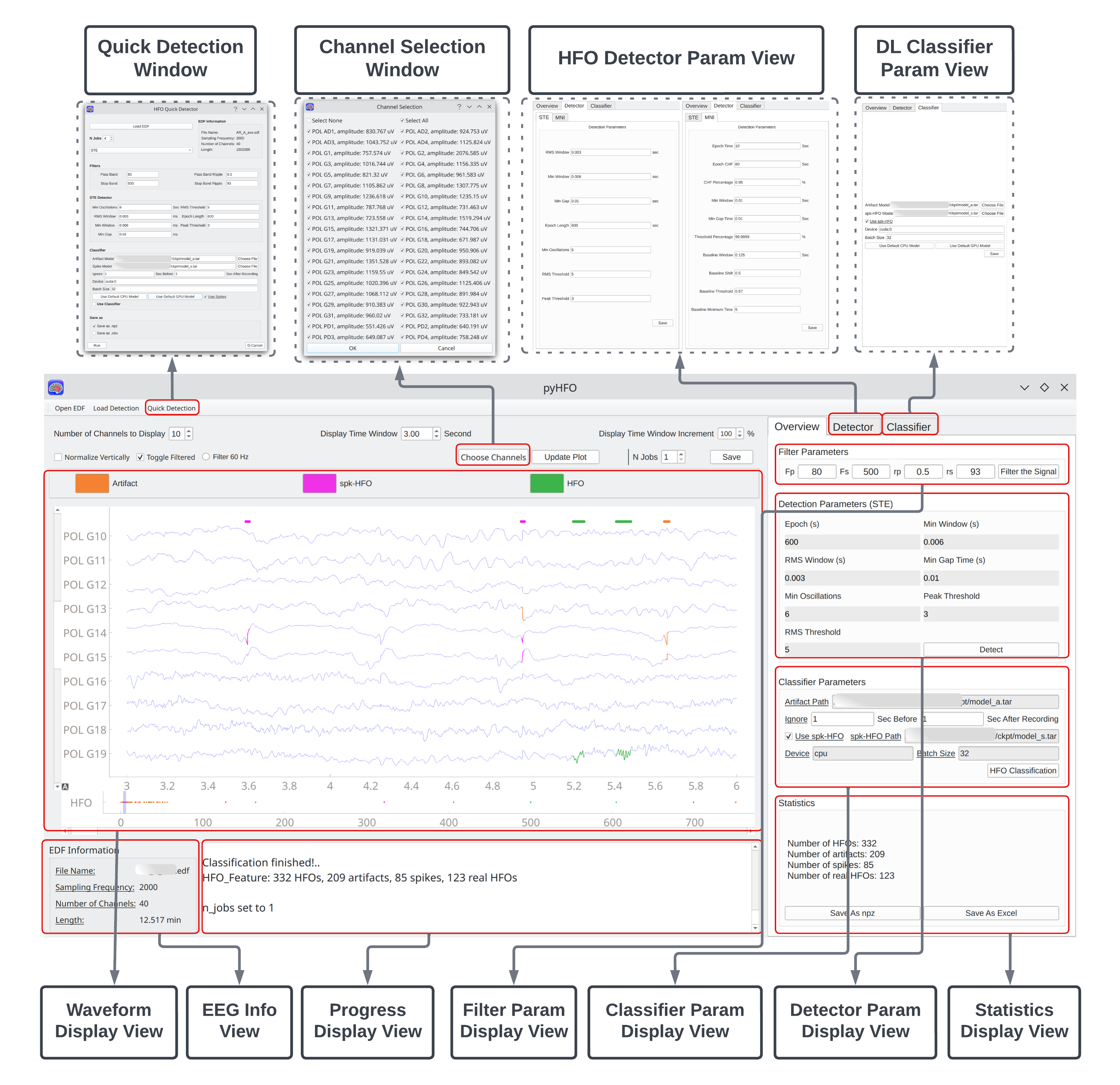pyHFO
Multi-window desktop application providing time-efficient HFO detection algorithms for artifact and HFO with spike classification.
pyHFO: High-Frequency Oscillation (HFO) Detection Tool
Overview
PyHFO is a multi-window desktop application designed to provide a time-efficient and accurate solution for detecting High-Frequency Oscillations (HFOs) in EEG data. Developed at Vwani Roychowdhury’s Lab at UCLA, PyHFO integrates advanced detection algorithms to classify artifacts and HFOs with spikes, ensuring improved accuracy and efficiency for clinical and research applications.
One of PyHFO’s major advancements is its Hilbert (HIL) detector, which I contributed to developing and optimizing. By refining signal processing methods and leveraging deep learning architectures, PyHFO has significantly improved detection speeds while maintaining high accuracy.
🔗 Explore the GitHub Repository
Key Contributions
1. Implementation of HFO and Artifact Detection Algorithms
- Developed and integrated the Hilbert (HIL) detector to enhance PyHFO’s ability to classify HFOs, artifacts, and spikes in EEG data.
- Incorporated Latent State (LS) detection for spindle detection, expanding PyHFO’s analytical capabilities.
- Optimized VGG-based deep learning models for neurobiomarker identification.
2. Performance Optimization & Benchmarking
- Improved detection run-time by a factor of 50, achieving significant speed-ups compared to existing state-of-the-art models.
- Conducted comprehensive validation studies, ensuring PyHFO maintained comparable accuracy despite faster execution times.
- Benchmarked PyHFO against alternative solutions, refining algorithms for maximum efficiency.
3. User-Centric Design & Multi-Window Interface
- Designed PyHFO as a multi-window desktop application, facilitating intuitive interaction for researchers and clinicians.
- Implemented visualization tools to enable real-time signal processing and comparative analysis of detected HFO events.
- Enhanced usability by integrating dynamic EEG signal representation, supporting both raw and processed data views.
Technical Approach & Features
Deep Learning for EEG Analysis
- VGG-based deep learning model used for artifact classification and signal feature extraction.
- Integration of Hilbert Transform-based frequency analysis for precise HFO detection.
Multi-Agent Signal Processing
- Multi-modal filtering techniques for differentiating between true HFOs, artifacts, and noise.
- Advanced time-series segmentation for EEG pattern recognition.
Optimized Detection Workflow
- Reduced computational overhead, allowing real-time processing of EEG data.
- Adaptive thresholding techniques for robust event classification.
Impact & Future Work
PyHFO provides clinicians and researchers with a fast, reliable, and interpretable tool for detecting neural oscillations, which are critical in understanding conditions such as epilepsy.
Future Directions
- Integration of real-time EEG data streaming for live monitoring and detection.
- Expansion to detect other neurobiomarkers, including sleep spindles and K-complexes.
- Further deep learning enhancements to refine classification accuracy.
Visual Representation

Explore More
- GitHub Repository: 🔗 PyHFO
- Related Work: EEG Signal Processing, HFO Detection, Neural Biomarkers